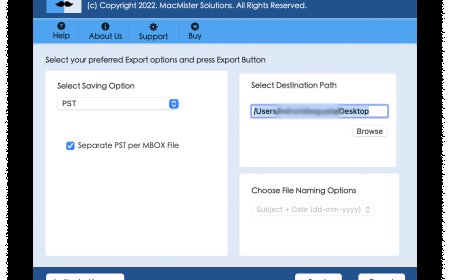How to Hike the Dogie Loop Trail
How to Hike the Dogie Loop Trail The Dogie Loop Trail is one of the most captivating and underrated hiking experiences in the American West, offering a seamless blend of rugged terrain, panoramic vistas, and rich ecological diversity. Located in the remote and breathtaking landscape of the Bighorn Mountains in northern Wyoming, this 11.5-mile loop is a favorite among seasoned hikers seeking solitu
How to Hike the Dogie Loop Trail
The Dogie Loop Trail is one of the most captivating and underrated hiking experiences in the American West, offering a seamless blend of rugged terrain, panoramic vistas, and rich ecological diversity. Located in the remote and breathtaking landscape of the Bighorn Mountains in northern Wyoming, this 11.5-mile loop is a favorite among seasoned hikers seeking solitude, challenge, and raw natural beauty. Unlike more crowded trails, the Dogie Loop remains relatively untouched by mass tourism, preserving its wild character and offering an authentic backcountry experience.
Understanding how to hike the Dogie Loop Trail isn’t just about following a path—it’s about preparing for variable weather, navigating subtle trail markers, respecting wildlife corridors, and embracing the self-reliance that mountain hiking demands. This guide is designed to equip you with the knowledge, tools, and mindset needed to safely and successfully complete the trail, whether you’re a first-time backcountry adventurer or a seasoned trekker looking to add a new gem to your repertoire.
By the end of this comprehensive tutorial, you’ll know exactly how to plan your journey, what gear to bring, how to read the terrain, and how to respond to common challenges on the trail. More importantly, you’ll learn how to hike with respect—for the land, for the wildlife, and for the legacy of those who have traveled this path before you.
Step-by-Step Guide
Step 1: Research and Plan Your Route
Before setting foot on the Dogie Loop Trail, thorough research is non-negotiable. Begin by consulting official sources such as the Bighorn National Forest website and the U.S. Forest Service trail maps. The trail begins at the Dogie Trailhead, located approximately 20 miles northeast of Lovell, Wyoming, off Forest Road 10107. This road is gravel and can be rough after rain or snowmelt, so a high-clearance vehicle is strongly recommended.
Use digital tools like Gaia GPS or AllTrails to download offline maps and verify trail conditions. The loop is marked with occasional cairns and faded blazes, but signage is minimal. Study the elevation profile: the trail climbs from around 7,800 feet at the trailhead to a high point of 9,700 feet at the ridge between Dogie and Elk Peaks, then descends through forested slopes back to the starting point. Total elevation gain is approximately 2,100 feet.
Plan your route around the season. The trail is typically snow-free from late June through early October. Even in summer, snowfields can linger at higher elevations, especially on north-facing slopes. Check recent trail reports from hikers on forums like Reddit’s r/Wyoming or the Wyoming Hiking Club Facebook group for real-time conditions.
Step 2: Choose the Right Time to Hike
Timing is critical on the Dogie Loop. The window for safe and enjoyable hiking is narrow due to the mountainous environment. Aim for mid-July through mid-September for the most stable weather. Early June can still bring snowpack and muddy trails, while October brings the risk of sudden snowstorms and rapidly dropping temperatures.
Start your hike early—by 6:00 a.m. at the latest. This gives you ample daylight to complete the loop before afternoon thunderstorms, which are common in the Rockies during summer months. Lightning is a serious hazard above treeline, and the ridge section of the loop is exposed. If you hear thunder or see darkening skies, descend immediately to tree cover.
Weekdays are ideal. Weekends see increased traffic, especially from nearby towns like Buffalo and Sheridan. For true solitude, consider hiking during the first week of September, when the aspen groves begin to turn gold and the crowds have thinned.
Step 3: Pack Essential Gear
Proper gear can mean the difference between a rewarding adventure and a dangerous situation. The Dogie Loop is not a day hike for the unprepared. Here’s a non-negotiable packing list:
- Navigation tools: GPS device with preloaded offline maps, physical topographic map (USGS 7.5’ series: “Dogie Peak”), and compass. Cell service is nonexistent along the trail.
- Layered clothing: Moisture-wicking base layer, insulating mid-layer (fleece or down), and waterproof shell. Temperatures can swing 30°F in a single day.
- Footwear: Sturdy, broken-in hiking boots with ankle support and aggressive tread. Rocky sections and loose scree demand reliable grip.
- Hydration: Minimum 3 liters of water capacity. There are no reliable water sources between the trailhead and the ridge. Carry a water filter or purification tablets as a backup for streams near the summit.
- Food: High-calorie, lightweight snacks—nuts, dried fruit, energy bars, jerky. Plan for 2,500–3,000 calories over the course of the hike.
- First aid kit: Include blister care, antiseptic wipes, tweezers, pain relievers, and any personal medications.
- Emergency supplies: Whistle, headlamp with extra batteries, emergency blanket, fire starter, and multi-tool.
- Bear spray: Grizzly bears inhabit the area. Carry it accessible, not buried in your pack. Know how to use it before you leave.
Do not underestimate the weight of your pack. A fully loaded backpack should not exceed 20% of your body weight. Practice carrying it on shorter hikes before attempting the Dogie Loop.
Step 4: Begin the Hike at the Dogie Trailhead
Arrive at the trailhead with your gear organized and your map reviewed. The trail begins at a small, unmarked pullout with a wooden sign reading “Dogie Trailhead.” There is no fee, no ranger station, and no trash bins—pack out everything you bring in.
The initial 1.2 miles follow a gentle, well-trodden path through aspen and spruce forest. Watch for elk tracks and bear scat—signs of active wildlife. Stay on the main tread; side trails can lead to dead ends or private land. After this section, the trail begins to climb more steeply, switching back through a rocky slope.
At the 2.5-mile mark, you’ll reach a junction with the Elk Creek Trail. Stay right to remain on the Dogie Loop. This point is easy to miss—look for a small cairn and a faint blue diamond blaze on a nearby spruce. Do not take the left fork, which leads to a private ranch.
Step 5: Ascend to the Ridge and Navigate the Exposed Section
The next 2.8 miles are the most challenging and rewarding. The trail climbs through alpine meadows dotted with wildflowers—buttercups, Indian paintbrush, and lupine—before emerging onto a narrow ridge between Dogie Peak and Elk Peak. This is the heart of the loop.
Here, the trail becomes rocky and uneven. Use your hands for balance on steep sections. The exposure is real—there are no guardrails, and drop-offs can be sudden. If you’re uncomfortable with heights, consider turning back here. The views are spectacular: 360-degree panoramas of the Bighorn Basin, the Absaroka Range in the distance, and endless sky.
Stay alert for trail markers. Cairns are spaced irregularly. If you lose the trail, stop. Do not guess. Use your compass to reorient. The ridge runs roughly north-south. If you’re heading east or west, you’re off-course. Return to the last cairn and retrace your steps.
Take a short break at the 6.2-mile mark, where a small, sheltered rock outcrop offers shade and a perfect spot to eat lunch. Hydrate. Check your bearings. This is your last opportunity to rest before the descent.
Step 6: Descend Through the Forested Slopes
The descent from the ridge is steep and technical. The trail drops over 1,800 feet in 3.5 miles, winding through dense pine and fir forest. Watch for loose gravel and hidden roots. Many hikers injure ankles here due to fatigue and distraction.
Use trekking poles if you have them—they reduce impact on knees and improve stability. Keep your center of gravity low and take short, deliberate steps. Avoid shortcuts; eroded paths lead to landslides.
At mile 8.7, you’ll cross a small, clear stream. This is your last reliable water source. Fill up if needed. The trail levels out here and becomes softer underfoot. You’ll pass through a grove of aspens that shimmer in the late afternoon light.
Step 7: Return to the Trailhead and Complete the Loop
The final 1.5 miles are a gentle walk through open forest. You’ll retrace the first section of the trail, but now with the satisfaction of having completed the loop. Watch for wildlife returning to the meadows as dusk approaches—elk, mule deer, and occasionally a moose.
When you reach the trailhead, take a moment to reflect. This trail is not just a physical journey—it’s a mental one. Many hikers report a profound sense of peace after completing the Dogie Loop, a feeling that comes from self-reliance, quiet immersion, and connection to wild places.
Before leaving, document your hike: note the weather, trail conditions, wildlife sightings, and any changes you observed. Share your findings with local hiking communities to help others plan safely.
Best Practices
Leave No Trace Principles
The Dogie Loop Trail thrives because it remains pristine. Follow Leave No Trace ethics rigorously:
- Plan ahead and prepare: Know regulations, weather, and terrain. Don’t rely on luck.
- Travel and camp on durable surfaces: Stick to established trails. Avoid trampling vegetation.
- Dispose of waste properly: Pack out all trash, including food scraps and toilet paper. Use a portable toilet or dig a cathole 6–8 inches deep at least 200 feet from water sources.
- Leave what you find: Do not pick flowers, move rocks, or carve into trees. Natural artifacts belong where they are.
- Minimize campfire impact: Fires are discouraged above 8,500 feet. Use a camp stove instead.
- Respect wildlife: Observe from a distance. Never feed animals. Store food in bear-resistant containers or hang it 10 feet off the ground and 4 feet from the trunk of a tree.
- Be considerate of other visitors: Yield to uphill hikers. Keep noise low. Let the wilderness speak for itself.
Weather Awareness and Risk Management
Mountain weather is unpredictable. Even on a clear morning, afternoon storms can roll in with lightning, hail, or sudden snow. Monitor the sky constantly. Signs of an approaching storm include:
- Dark, towering clouds building to the west
- Drop in temperature and sudden wind shifts
- Static crackling in the air or hair standing on end (sign of imminent lightning)
If you’re caught in a storm, act immediately:
- Descend from ridges and peaks.
- Avoid isolated trees, cliff edges, and open meadows.
- Find a low spot away from water. Crouch on your insulation pad, feet together, hands over ears.
- Wait at least 30 minutes after the last thunderclap before resuming travel.
Wildlife Safety
Grizzly bears, black bears, moose, and elk are all present on the Dogie Loop. Your behavior determines your safety.
For bears: Make noise while hiking—clap, sing, or use a bell—especially in dense brush or near streams. Carry bear spray and know how to deploy it: remove the safety, aim slightly downward, and spray in a 5–7 second burst when the bear is 30–60 feet away. Never run. Bears can outrun humans.
For moose and elk: These animals are unpredictable, especially during rutting season (September–October). Give them a wide berth—100 yards minimum. If an animal charges, put a tree or large rock between you and it. Do not turn your back.
Navigation and Trail Etiquette
The Dogie Loop is not a marked trail like those in national parks. You must be self-sufficient in navigation.
- Check your GPS every 15–20 minutes, even if you’re confident.
- Take photos of trail junctions and landmarks as reference points.
- If you meet another hiker, exchange brief updates: “Trail clear past the ridge?” or “Any snow on the descent?”
- Yield to horses and pack animals—they have the right of way.
- If you’re lost, stay put. Signal with your whistle (three blasts = distress). Do not wander.
Physical and Mental Preparation
Physical fitness matters, but mental resilience matters more. The Dogie Loop tests endurance, focus, and adaptability.
- Train for 6–8 weeks before your hike: include hill repeats, long walks with a loaded pack, and core strengthening.
- Practice hiking in variable weather—rain, wind, heat—to build adaptability.
- Meditate or journal before your trip. Mental clarity reduces panic in stressful situations.
- Set realistic goals. Completing the loop is an achievement. Pushing too hard can lead to injury or poor decisions.
Tools and Resources
Recommended Mapping and Navigation Apps
- Gaia GPS: Offers detailed topographic maps, offline access, and trail overlays. Download the Bighorn National Forest map layer.
- AllTrails Pro: User-submitted trail reports, photos, and recent condition updates. Filter by “Dogie Loop” for real-time insights.
- Google Earth Pro: Use the 3D terrain view to visualize elevation changes and identify potential landmarks before you go.
- USGS TopoView: Download official 7.5’ quadrangle maps (Dogie Peak, Elk Peak, and the surrounding area) for backup paper copies.
Essential Gear Brands and Products
- Footwear: Salomon Quest 4D 3 GTX or La Sportiva TX4
- Backpack: Osprey Atmos AG 65 or Deuter Aircontact Lite 65+10
- Water Filter: Sawyer Squeeze or Katadyn BeFree
- Bear Spray: Counter Assault or UDAP
- Headlamp: Black Diamond Spot 400 or Petzl Actik Core
- Trekking Poles: Black Diamond Alpine Carbon Cork or Komperdell C3 Carbon
- Layering System: Smartwool base layer, Patagonia Nano Puff mid-layer, Arc’teryx Beta LT shell
Books and Guides
- “Hiking the Bighorns: A Guide to the Best Trails” by David B. Winters – Contains detailed descriptions of the Dogie Loop and nearby routes.
- “The Complete Walker IV” by Colin Fletcher and Chip Rawlins – A foundational text on backcountry ethics and gear selection.
- “Wild: From Lost to Found on the Pacific Crest Trail” by Cheryl Strayed – While not about the Dogie Loop, this memoir offers powerful insight into the psychological journey of long-distance hiking.
Online Communities and Forums
- Reddit: r/Wyoming, r/hiking, r/Backpacking
- Facebook Groups: Wyoming Hiking Club, Bighorn National Forest Trail Report
- Trail forums: Mountain Project (mountainproject.com), AllTrails Community
Join these communities before your trip. Ask specific questions: “Has the creek crossing near mile 7 been washed out?” or “Are the cairns still visible on the ridge after the July rains?” Locals often respond within hours.
Weather and Trail Condition Resources
- National Weather Service – Riverton Forecast Office: Provides mountain-specific forecasts for the Bighorns.
- Wyoming State Climate Office: Historical weather patterns and snowpack data.
- USDA Forest Service – Bighorn National Forest: Official trail status updates, closures, and fire restrictions.
- Mountain Forecast: Detailed wind, precipitation, and temperature predictions for specific peaks.
Real Examples
Example 1: Sarah’s First Solo Hike
Sarah, a 32-year-old software engineer from Denver, had never hiked solo before. She spent three months preparing: hiking local trails with a 30-pound pack, studying topographic maps, and practicing with her GPS. On August 12, she started the Dogie Loop at 5:30 a.m. The weather was perfect—clear skies, light wind. She reached the ridge by noon and took photos of the valley below, noting how the shadows shifted as the sun moved.
On the descent, she misjudged a trail junction and wandered 0.3 miles off-course. Instead of panicking, she stopped, consulted her map, and retraced her steps. She reached the trailhead at 7:45 p.m., exhausted but exhilarated. She wrote a detailed account on AllTrails, including a hand-drawn map of the junction she missed. Her post has since helped over 200 hikers avoid the same mistake.
Example 2: The Family Hike That Turned Into a Rescue
A family of four from Nebraska attempted the Dogie Loop in late June, underestimating the snowpack. They brought sneakers and no warm layers. By mile 5, they were stuck on a snowfield with no traction. One child slipped and twisted an ankle.
They used their phone to call 911—but had no signal. They huddled together, wrapped in a single emergency blanket, and used a whistle to signal. A search and rescue team located them the next morning after hearing the whistle. The family was unharmed but traumatized. Their story was shared widely in local outdoor forums as a cautionary tale.
Example 3: The Photographer’s Golden Hour
James, a landscape photographer from Cody, Wyoming, hiked the Dogie Loop at sunrise in early September. He arrived at the ridge just as the sun crested over Elk Peak, casting a golden glow over the aspen groves below. He captured 120 images, including one of a mule deer silhouetted against the sunrise—a photo that later won first place in the Wyoming Nature Photography Contest.
He credits his success to patience and timing. He spent two nights camping near the trailhead, waking before dawn to be in position. He didn’t rush. He didn’t take shortcuts. He respected the trail—and the light.
Example 4: The Seasoned Hiker Who Knew When to Turn Back
Mark, a 60-year-old retired ranger, had hiked the Dogie Loop five times. On his sixth attempt, he noticed dark clouds forming over the ridge by 11 a.m.—much earlier than usual. The wind had shifted. He checked his barometer: pressure was dropping fast. He had already climbed 70% of the elevation gain.
He turned back.
Two hours later, a thunderstorm dumped two inches of rain and hail on the ridge. He later learned that two other hikers were stranded for six hours. He didn’t feel like a failure—he felt like a wise hiker.
FAQs
Is the Dogie Loop Trail suitable for beginners?
The Dogie Loop is not recommended for absolute beginners. It requires experience with backcountry navigation, variable weather, and steep, exposed terrain. Beginners should first complete several moderate day hikes (like the Bighorn Lake Trail or the Red Canyon Loop) before attempting this route.
Do I need a permit to hike the Dogie Loop?
No permit is required to hike the Dogie Loop Trail. It is located within the Bighorn National Forest, which allows free access for day use. However, if you plan to camp overnight, you must follow dispersed camping rules and obtain a free self-issue permit from the Forest Service website.
Are there water sources along the trail?
There are two small, seasonal streams near the ridge and one reliable creek at mile 8.7. Water is not guaranteed—especially in late summer. Always carry enough water and a filtration system. Test your filter before your hike.
Can I bring my dog?
Yes, dogs are allowed on the Dogie Loop but must be under voice control at all times. Keep them leashed near wildlife and pack out their waste. Be aware that bears and moose may react unpredictably to dogs.
What’s the best time of year to see wildflowers?
Mid-July through early August is peak bloom. Look for Indian paintbrush, bluebells, and fireweed in the alpine meadows near the ridge. The colors are most vibrant after a wet spring.
Is there cell service on the trail?
No. There is no reliable cell service anywhere on the Dogie Loop. Download offline maps and carry a satellite communicator (like a Garmin inReach) if you need emergency communication.
Can I hike the Dogie Loop in winter?
Technically yes, but it’s extremely dangerous and not recommended. Snow can be 3–6 feet deep, avalanche risk is high, and temperatures regularly drop below 0°F. Only experienced winter mountaineers with full ice gear and avalanche training should attempt it.
How long does it take to complete the Dogie Loop?
Most hikers complete the loop in 7–9 hours, depending on fitness, weather, and stops. Fast hikers can do it in 5–6 hours; slower hikers or photographers may take 10–12 hours. Plan for the longer end of the range.
What should I do if I see a bear?
Stay calm. Do not run. Speak firmly and back away slowly. If the bear approaches, prepare your bear spray. If it charges, use the spray. Most charges are bluffs. If it makes contact, play dead if it’s a grizzly; fight back if it’s a black bear.
Can I camp on the trail?
Yes. Dispersed camping is allowed outside of designated wilderness areas. Camp at least 200 feet from water sources and trails. Use established fire rings if available, or use a camp stove. Always pack out your waste.
Conclusion
Hiking the Dogie Loop Trail is more than a physical challenge—it’s a rite of passage for those who seek connection with wild, unspoiled landscapes. It demands preparation, humility, and respect. The trail doesn’t care about your credentials, your gear brand, or your Instagram following. It only responds to your awareness, your caution, and your care.
By following the steps outlined in this guide—planning thoroughly, packing wisely, navigating with care, and leaving no trace—you not only ensure your own safety but also help preserve this fragile ecosystem for future generations.
The Dogie Loop doesn’t offer the comfort of paved paths or the reassurance of ranger stations. It offers something rarer: silence, solitude, and the profound clarity that comes from moving through wild country on your own two feet.
When you stand on that ridge, wind in your face, the world stretching endlessly below you, you’ll understand why this trail endures—not because it’s easy, but because it’s real.
Go prepared. Go respectfully. Go with intention. And when you return, share your story—not to boast, but to guide. The trail remembers those who honor it.





























